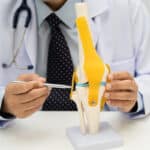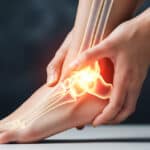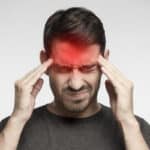
For each person, the intensity and manageability of pain is very different. For instance, one individual with a herniated disk may experience tremendous pain while another individual with the same disorder has no symptoms whatsoever. Likewise, a muscle strain may vary from mild to weakening.
Back pain is a common reason why people treat themselves and seek medical attention. Sometimes in their lives, most people experience back pain. Various causes lead to back pain; some are self-inflicted due to bad habits. Different causes of back pain include injuries, muscle stress, and sports injuries.
Back pain can flare up and then subside under certain conditions, only after a few weeks. Multiple causes of back pain may include accidents, strains, and wounds. Spondylolisthesis and cervical radiculopathy are two kinds of back injury. Both have symptoms, triggers, and treatments of their own.
Medical Terms and Back Pain
You can hear terms like thoracic, lumbar, or sacrum when you see our pain clinic in OKC. The point is that back pain is a major spectrum that covers many areas of the spine. Back pain is a big deal because there are 17 vertebral bodies, lots of joints, and the sacrum along the upper back to the tailbone. A simple injury, for example, a lifting and twisting sprain/strain, can lead to immediate and severe pain.
Vertebrae
The column of 33 bones and tissue extending from the skull to the pelvis is the spine or backbone. These bones, or vertebrae, enclose a nerve tissue cylinder known as the spinal cord and protect it. An intervertebral disk or cartilage band serves as a shock absorber between the vertebrae between each of the vertebrae.
Types of Vertebrae
- Cervical vertebrae: Seven vertebrae of the upper spine.
- Thoracic vertebrae: 12 bones between the neck and lower back.
- Lumbar vertebrae: Located in the lower back between the chest and hips it has five largest and strongest vertebrae.
The bones at the base of the spine are the sacrum. The sacrum consists of five fused vertebrae, whereas the coccyx (tailbone) consists of four fused vertebrae.
Description of Pain
It is essential to determine a back pain diagnosis how you describe your pain to your pain management doctors in OKC, its distribution region, and any associated symptoms. Three prevalent back pain categories include:
Axial Pain – Axial pain is restricted to one place or region, also called mechanical pain. Several ways, such as sharp or dull, can be defined as coming and going, continuous, or hurting. A muscle strain, like facet joints and annular tears in disks, is a prevalent cause of arch back pain.
Referred Pain – Referred pain, often defined as sluggish and achy, tends to move and differ in intensity. Degenerative disk disease can trigger referred pain in the hips and posterior thighs for instance in the lower back.
Radicular Pain – Radicular pain, commonly known as electrical shock or burning, follows the spinal nerve route as it exits the spinal canal. Compression and/or swelling to a spinal nerve root cause this sort of pain. Radical pain may travel into the arm in the reduced back (lumbar spine). Sciatica or radiculopathy (when accompanied by weakness and/or numbness) are other terms for radicular pain. Conditions like a herniated disk, spinal stenosis, or spondylolisthesis can cause it.
When Do You Need Medical Attention?
- You can’t get upright.
- Pain with fever.
- Loss of bowel and or bladder function
- Leg pain and weakness gradually deteriorate.
- Pain is aggravating.
Diagnosis
In addition to performing a full history and physical examination for back pain, your physician may recommend one of the following diagnostic tests: X-rays that can be used to provide details of bone structures in the spine and to check for instability, tumors, and fractures.
CT scans are capable of identifying circumstances, such as a herniated disk or spinal stenosis.
MRI scans can detail the discs and nerve roots of the back. MRI scans are used most frequently for pre-operative planning.
Treatment
Your doctor will take a detailed medical history, discuss your symptoms, and perform a physical exam to diagnose the cause of back pain correctly. Diagnostic tests like X-rays, MRI, or diagnostic injections, are sometimes required when attempting to identify or affirm the underlying cause of pain.
Fixing Your Back Pain The Right Way
For patients, staying positive is one of the most important aspects of healing. However, there are occasions when an excessively positive outlook or misunderstanding about what is actually achievable will impede healing. The belief that there is a cure or remedy for everything that hurts is one example of this, which I always see.
Many patients visiting their pain management doctors with the intention of being fixed is quite understandable. You want to find out about the problem, resolve it, let the pain go, and then move on. However, people are not machines, as you can’t easily replace or restore a damaged component. The pain you suffer sometimes derives from multiple interconnecting causes, and not a simple cause. People just don’t come with an easy-to-read manual for the owner.
Pain in the back is an outstanding example. A cause, such as a herniated disc or a skin injury, can begin with pain or sciatica. However, a single targeted tissue injury can quickly lead to a series of events, including tensioning of the back muscles, stiffening joints, and malfunction of nerves. When it does so, the back gets more difficult to lift, the legs get weaker, and sleep, comfort, or work becomes more difficult. If this happens, then people will be nervous and depressed, have their family and friends removed, and experience the pinch of lost income.
It can be a formula for disasters to assume that all these dynamic and interrelated issues can be solved by only undergoing back-operation to “fix” something systemic. Recovering from a major back intervention, such as a fusion, can mean months or years of rehabilitation without providing significant and permanent pain relief. Whatever therapies you choose, we believe it helps to take a solution from what hurts rather than to concentrate immediately on repairing or curing. Muscle imbalances, inflammatory joints, herniated discs, and injured nerves will all be healing, and the longer and more attention we take, the better the result.
And not just the body needs to be healed. The painful person’s mind and soul need a way to relieve unpleasant mood swings and debilitating tension. Continuous pain can lead to changes in the nervous system, endocrine, and immune systems, which keep us on the brink and in panic. One procedure or counseling would not necessarily restore or vanish the emotional equilibrium.
Healing may also entail embracing all, including all its imperfections. For example, it is natural to devote scar tissue to the way the body heals. A fractured bone or torn tendon might heal, but it’s not going to look just like before the injury. It’s easier to focus time and energy on making the best it can do now, and we can’t get back in time to find, feel, or move exactly like we did years ago. Acceptance may not give up; it is to realize how, after what we have been through, we can be the strongest version of ourselves.
Both the body and mind of a human may be healed, repaired, and restored when they are wounded. Shifting from “fixing” to healing will open new doors to better pain and well-being management.
Preventing and Treating Back Pain

Call Our Back Pain Specialist in OKC
Come to our back-pain specialists in OKC at Oklahoma Spine & Pain Management so that you can treat your pain and what causes it. Contact pain management doctors in OKC at Oklahoma Spine & Pain Management.
**Disclaimer: This content should not be considered medical advice and does not imply a doctor-patient relationship.






